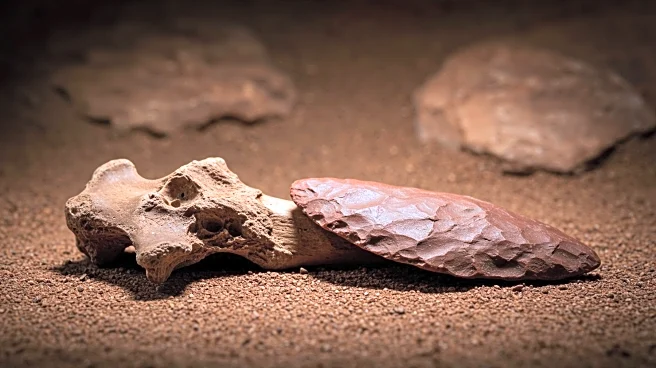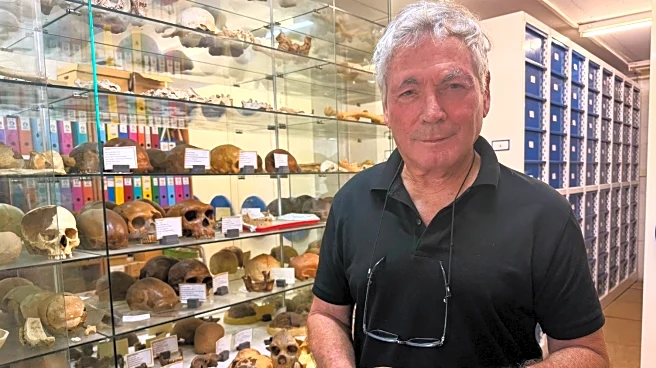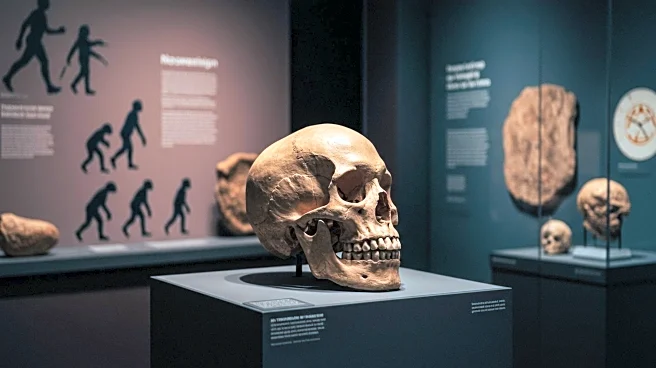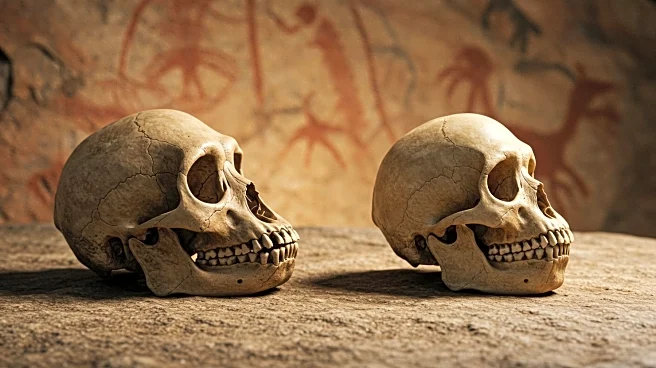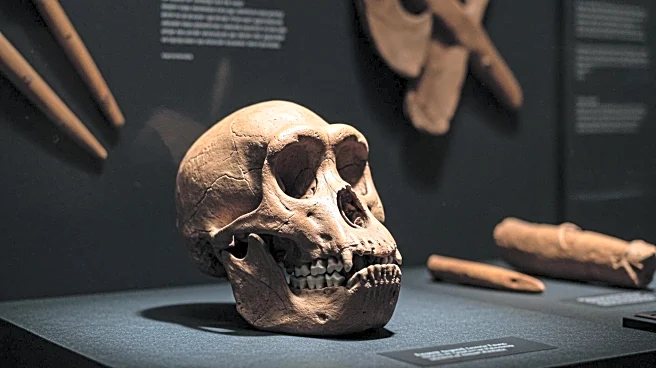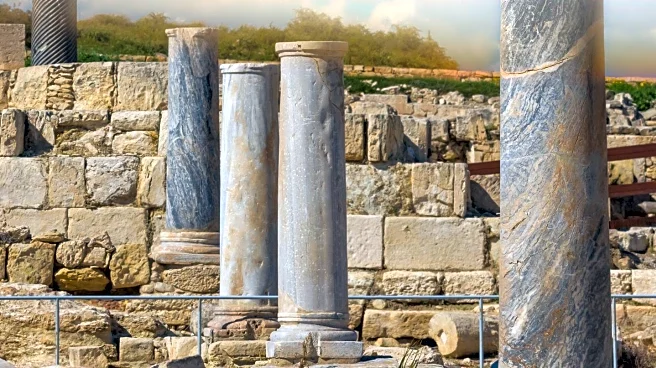What's Happening?
A groundbreaking study has revealed the earliest known evidence of interbreeding between Homo sapiens and Neanderthals, based on a 140,000-year-old skeleton found in Skhul Cave, Israel. The research, led by Tel Aviv University and the French National Centre for Scientific Research, shows that the child's skeleton exhibits traits from both human groups, challenging the notion that they were separate species. The study provides insights into the genetic and social interactions between Neanderthals and Homo sapiens, suggesting continuous genetic infiltration from Neanderthals into the Homo sapiens population.
Why It's Important?
This discovery reshapes our understanding of human evolution, highlighting the complex interactions between Neanderthals and Homo sapiens. The findings suggest that interbreeding occurred much earlier than previously thought, influencing the genetic makeup of modern humans. Understanding these interactions can provide insights into the migration patterns, social structures, and adaptive strategies of early human populations. The study also underscores the importance of archaeological research in uncovering the history of human evolution and the factors that shaped our species.
Beyond the Headlines
The discovery raises questions about the cultural and social dynamics between Neanderthals and Homo sapiens, including the exchange of knowledge, technology, and cultural practices. It also prompts a reevaluation of the timeline and geographical spread of human evolution, suggesting that the Land of Israel played a significant role in the early interactions between these groups. The findings may lead to further research into the genetic contributions of Neanderthals to modern humans and the implications for understanding human diversity and adaptation.
